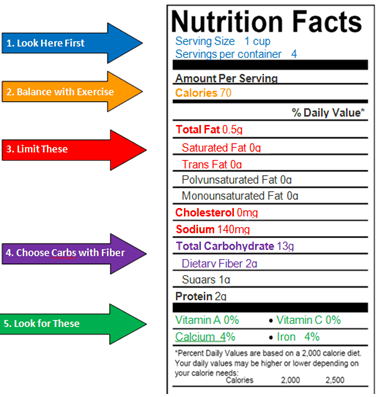
Importance of checking food label
As a consumer, one needs to make wise choices about the food we eat. This is where food labels come in. They help us make informed decisions towards choosing good nutrition and health. Knowing how to read food labels also assures that we get more value for our money and protects us from incorrect claims on the product packs.
The Basics of the Food Label
Labels are designed so that consumers are provided with useful information about the product and how this would fit into their daily diets. This is how one could read these labels
1. Look at the list of ingredients
The list provides an overview of the product's "recipe" or constituents. Ingredients are arranged from the maximum to the least amount. Eg: If a product lists its ingredients as: Sugar, Water, and Juice Concentrate Artificial Flavor-This means that the bulk of the product is sugar. The ingredient with least amount is juice concentrate.
2. Be aware of health-sensitive ingredients
Health-sensitive ingredients include fat, sugar, and salt. The rule for these is "Less is better". Frequent high intake of these ingredients is associated with obesity, heart problems diabetes etc.
3. Watch the nutrient amounts
Nutrition Information Label for nutrient amounts are given either by per 100g of the product or the recommended Energy and Nutrient Intake .This allows you to compare nutrient amounts among different brands of a particular food.
4. Get more value
Check the real cost per serving of a product & how many servings could be prepared from a big pack. For this, you'll need to look at these 2 items:
1. Net Weight is the amount of product inside the pack. This can be found near the bottom of a pack, usually at the front of the packaging
2. Serving Size is the amount (usually in grams or milliliters) per serving of a product. Divide Net Weight by Serving Size. This would give you the number of servings in the pack and help you decide if the pack is worth the price being charged.
5. Choose low energy-dense foods
Opt for low energy-dense foods. Energy density refers to the ratio of calories to the weight of the food. Less calories per portion size is generally better for weight management. Eating low energy-dense food will help you feel full due to relatively bigger portion size, yet low caloric amount.
6. Understand nutrient content claims.
- A zero-calorie product can actually contain up to 4 calories per serving
- A fat-free product can contain up to 0.5 grams of fat per serving
- A low-fat product can have as much as 3 grams for solid products and 1.5g for liquid products.
The Food Label is designed to help people choose foods well. By knowing how to use it, you can understand how a specific food item can fit into your overall diet. You can more effectively and efficiently select foods and choose between products. So go ahead, check the label and better manage your health.
Stay happy, Stay healthy.